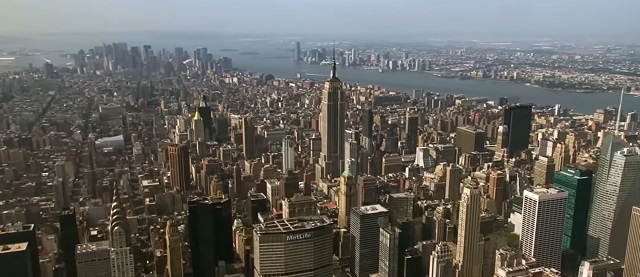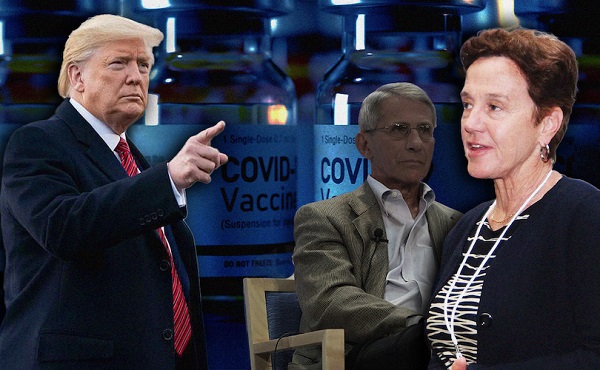Crime
Top NYPD Chief Says City’s Sanctuary Policies Should Be Vaporized After Migrant Allegedly Raped Woman At Knifepoint

 From the Daily Caller News Foundation
From the Daily Caller News Foundation
Davon-Bonilla sexually assaulted a woman in April, and after pleading guilty, he was released from Rikers Island prison on June 24.
The New York City Police Department’s chief of patrol is demanding the city roll back its sanctuary policies in the wake of another alleged migrant crime.
A homeless migrant in Brooklyn was arrested for allegedly raping a woman on Sunday at knifepoint while his migrant accomplice allegedly beat a man when he attempted to intervene, according to CBS News. At least one of the migrants allegedly involved had been previously arrested for a prior sexual assault and was released back into the public, prompting outcry from New York City leadership about the sanctuary laws allowing criminal illegal migrants to avoid deportation.
“When that case was adjudicated, his next step should’ve been on a bus or a plane and removed from our city,” NYPD Chief of Patrol John Chell stated on Tuesday, referring to the conclusion of the migrant’s prior criminal proceedings, according to CBS News.
“Most of them are here for the American dream, but there’s a small portion that are not,” Chell said to CBS News. “We’re just looking for local government to maybe make that adjustment to those laws to really – at the end of the day, this all falls under the banner of keeping people safe.”
The case involves David Davon-Bonilla, a Nicaraguan migrant who crossed into the U.S. at Eagle Pass, Texas, in December 2022 and eventually made his way to New York City, according to ABC7. Davon-Bonilla sexually assaulted a woman in April, and after pleading guilty, he was released from Rikers Island prison on June 24.
Davon-Bonilla was arraigned Monday night and is being held without bail for allegedly raping the woman, according to ABC7.
Immigration and Customs Enforcement (ICE) did not immediately confirm Davon-Bonilla’s immigration status when reached for comment from the Daily Caller News Foundation.
Sanctuary laws largely prohibit local law enforcement from cooperating with federal immigration authorities, which typically means they cannot inform deportation officers when a criminal migrant is in their custody or when that migrant is being released back into the public. Former Mayor Bill de Blasio signed into law sanctuary legislation in 2014 limiting the New York Police Department’s ability to work with ICE, and he doubled down on this policy two years later.
In the wake of numerous high-profile crimes allegedly committed by illegal migrants, more New York City politicians – including Democrats – are calling for these policies to be rolled back.
“Laws do not allow us to coordinate with ICE. That’s the law,” Mayor Eric Adams, a Democrat, said in response to the latest rape case, according to CBS News.
“And, you know I’m not happy about that,” Adams continued. “And I think [Davon-Bonilla is] the poster child of what’s wrong with not doing that coordination.”
However, all efforts to actually wind back these sanctuary laws have so far fallen flat.
The Common Sense Caucus, a coalition of moderate Republican and Democratic members of the New York City Council, introduced legislation in June that would allow city police to more freely work with ICE agents, but in a city council dominated by liberal Democrats, the bill has not been able to move forward.
Members of the Common Sense Caucus had pinned their hopes on allowing New York City voters to directly vote on the issue, with the recently-established Charter Revision Commission given the authority to decide what issues city residents would be allowed to vote on in the November elections. However, these hopes were sunk once the commission released its report last month, announcing that there would be no referendum on the city’s sanctuary laws.
Over 208,000 migrants have sought refuge in New York City since the nationwide immigration crisis began, fomenting an “explosion” in the city’s shelter population and taxpayer expenditures, the commission’s own report acknowledges. City officials expect to hash out more than $12 billion managing the crisis through 2025.
The asylum crisis forced Adams to declare 5% budget cuts in September for government programs and services in order to pay for migrant housing and other services, and last year he bemoaned that the city was reaching a “breaking point” from the sheer volume of migrants.
NYC’s sanctuary laws have become more controversial following a strong of illegal migrant crimes, such as when a group allegedly went on a shopping spree and beat down an NYPD officer, another illegal migrant allegedly fired at two NYPD cops during a foot pursuit or the alleged rape of a 13-year-old girl at knifepoint by another illegal migrant.
One Democrat member of the Common Sense Caucus on Wednesday ripped city officials for failing to take action.
“Instead of being turned over to ICE after being arrested, convicted, and sentenced, this sicko was released back onto the streets, only to commit the same vile sexual assault again,” Council Member Robert Holden said in a press release. “This is a direct result of City Hall’s refusal to act and work with ICE to keep our communities safe, leaving us vulnerable to those who should have been deported.”
“We already have enough criminals in this city — why should we continue importing more?” Holden continued. “The madness in this city must end.”
Crime
Europol takes out one of the largest pedophile networks in the world with almost 2 million users

From LifeSiteNews
An international group of police agencies has taken down one of the largest pedophile networks in the world with almost two million users.
Investigators from Bavaria, Germany, announced yesterday that they dismantled an online pedophile platform called “Kidflix” used to distribute child pornography that had around 1.8 million users worldwide. Police carried out raids in 31 countries and arrested 79 people in total.
The European police unit Europol coordinated the operation led by the Bavarian criminal police. Europol announced that around 1,400 suspects have been identified worldwide in “one of the biggest blows against child pornography in recent years, if not ever.”
According to Europol, the platform “Kidflix” was one of the largest pedophile networks in the world. Guido Limmer, deputy head of the Bavarian criminal police, said it was the “largest operation ever” organized by Europol. The platform’s server, with over 70,000 videos at the time, was reportedly shut down by German and Dutch authorities in early March.
The 79 people arrested were not only suspected of having watched or downloaded videos of child sexual abuse but some were also suspected of personally harming children. The police units carried out the raids from March 10 to 23 and reportedly confiscated thousands of electronic devices. In Germany alone, 96 locations were raided. Among the suspects was a 36-year-old man who not only viewed illegal material but also reportedly offered up his young son for sexual abuse. The child was given to child protection services after the man was arrested, the Bavarian police spokesman said.
Limmer also noted that one of the arrested suspects was a “serial” abuser from the United States.
According to Europol, “Kidflix” was set up by cybercriminals in 2021 and became one of the most popular platforms for pedophiles. The international police agency said that the investigation into the network began in 2022.
In October 2024, German police dismantled another large online pedophile network with hundreds of thousands of users, arresting six men associated with the platform.
Last year, Germany’s Federal Criminal Police Office revealed that the cases of sexual abuse against children and adolescents had more than tripled in the past five years.
Catherine Herridge
FBI imposed Hunter Biden laptop ‘gag order’ after employee accidentally confirmed authenticity: report

From LifeSiteNews
Two independent journalists found that the FBI could have set the record straight by confirming the laptop was real and the subject of an ongoing criminal probe. Instead, FBI leadership allowed the false narrative about the laptop to gain momentum.
In a shocking report published on X, independent journalists Catherine Herridge and Michael Shellenberger revealed that an FBI agent accidentally confirmed to Twitter (now known as “X”) that the Hunter Biden laptop story was real less than three weeks before the 2020 election.
“For the first time, and with a change of administration, the FBI has now turned over to GOP House investigators the internal chat messages that show Bureau leadership actively silenced its employees,” Herridge and Shellenberger wrote on X.
“The FBI, which had a special task force to counter foreign election interference, could have set the record straight by confirming the laptop was real and the subject of an ongoing criminal probe,” the journalists explained. “Instead, FBI leadership allowed the false narrative about the laptop to gain momentum.”
“In 2024, an FBI official admitted to House investigators that an FBI employee had inadvertently confirmed the authenticity of Hunter Biden’s laptop to Twitter on a conference call the morning of October 14, 2020, the day the New York Post published a story about it,” Shellenberger wrote.
“I recall that when the question came up, an intelligence analyst assigned to the Criminal Investigative Division said something to the effect of, ‘Yes, the laptop is real,’” testified the then-Russia Unit Chief of the FBI’s Foreign Influence Task Force in a closed-door transcribed interview,” according to Herridge and Shellenberger. “I believe it was an (Office of General Counsel) attorney assigned to the (Foreign Influence Task Force) stepped in and said, ‘We will not comment further on this topic.’”
They recounted this exchange:
An individual whose name is blacked out, tells Elvis M. Chan, the San Francisco-based FBI special agent tasked with interacting with social media companies, there was a “gag order” on discussion of Hunter Biden’s laptop. In a separate exchange, Chan is told “official response no commen(t).”
In the chat, the FBI officials showed awareness that the laptop may have contained evidence of criminal activity.
Asked Chan, “actually what kind of case is the laptop thing? corruption? campaign financing?”
Another FBI employee responds, “CLOSE HOLD —” after which the response is redacted.
To which Chan responds, “oh crap,” appearing to underscore the serious nature of the probe, which included felony tax charges. Chan adds, “ok. It ends here.”
In the same conversation, Chan is asked if “anyone discussing that NYPost article on the Biden’s?” Chan responds, “yes we are. c d confirmed an active investigation. No further comment.” “C D” is likely shorthand for the FBI’s Criminal Division.
Said another FBI employee, whose name was redacted by the Bureau, “please do not discuss biden matter.”
It’s now common knowledge that national security agencies — including the FBI and CIA, Big Tech, and much of corporate media — colluded in suppressing truth and manufacturing lies in order to drag their preferred candidate, Joe Biden, across the finish line in the 2020 presidential election.
Incriminating evidence discovered on the laptop that Hunter Biden had long ago abandoned at a computer repair shop — reported on in two devastating pieces by the New York Post at the time — was ignored by mainstream media, fraudulently dismissed by former national intelligence officials, and essentially made inaccessible to the public by Big Tech social media sites Twitter and Facebook.
The computer contained emails showing that then-Vice President Biden had come under the influence of bad actors in Ukraine and Communist China and had used his powerful position in the Obama administration to pressure government Ukrainian officials into firing a prosecutor who was investigating the energy firm, Burisma, which was paying the younger Biden $50,000 per month to sit on its board of directors.
-

 2025 Federal Election2 days ago
2025 Federal Election2 days agoHighly touted policies the Liberal government didn’t actually implement
-

 2025 Federal Election8 hours ago
2025 Federal Election8 hours agoMainstream Media Election Coverage: If the Election Was a NHL Game, the Ice Would be Constantly Tilted Up and to the Left
-

 COVID-191 day ago
COVID-191 day agoTrump’s new NIH head fires top Fauci allies and COVID shot promoters, including Fauci’s wife
-

 Catherine Herridge2 days ago
Catherine Herridge2 days agoFBI imposed Hunter Biden laptop ‘gag order’ after employee accidentally confirmed authenticity: report
-

 Business2 days ago
Business2 days agoCalifornia planning to double film tax credits amid industry decline
-

 Automotive22 hours ago
Automotive22 hours agoAuto giant shuts down foreign plants as Trump moves to protect U.S. industry
-

 Energy15 hours ago
Energy15 hours agoTrump Takes More Action To Get Government Out Of LNG’s Way
-

 Courageous Discourse2 days ago
Courageous Discourse2 days agoEurope Had 127,350 Cases of Measles in 2024








